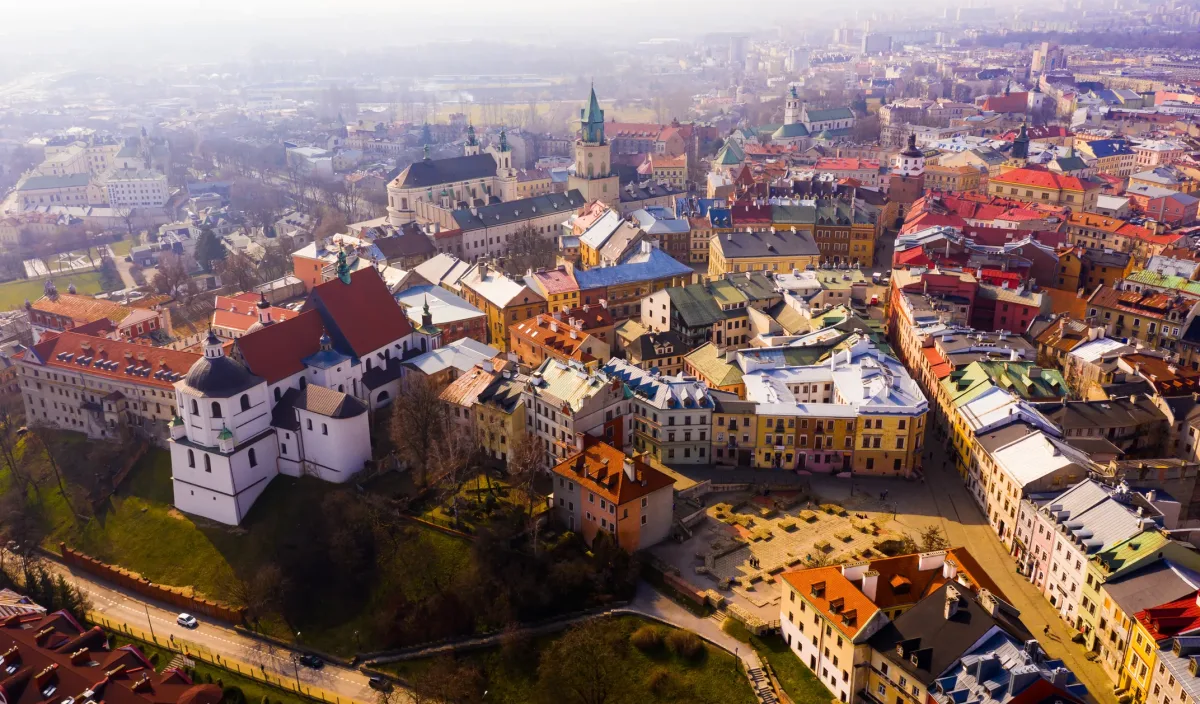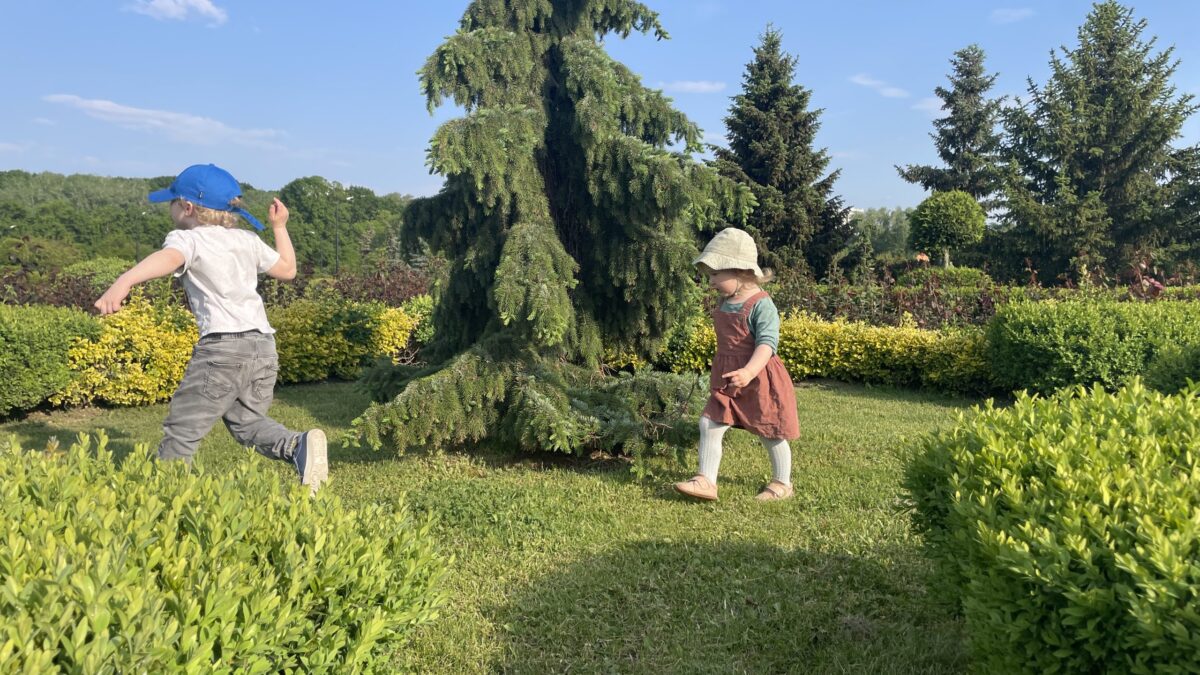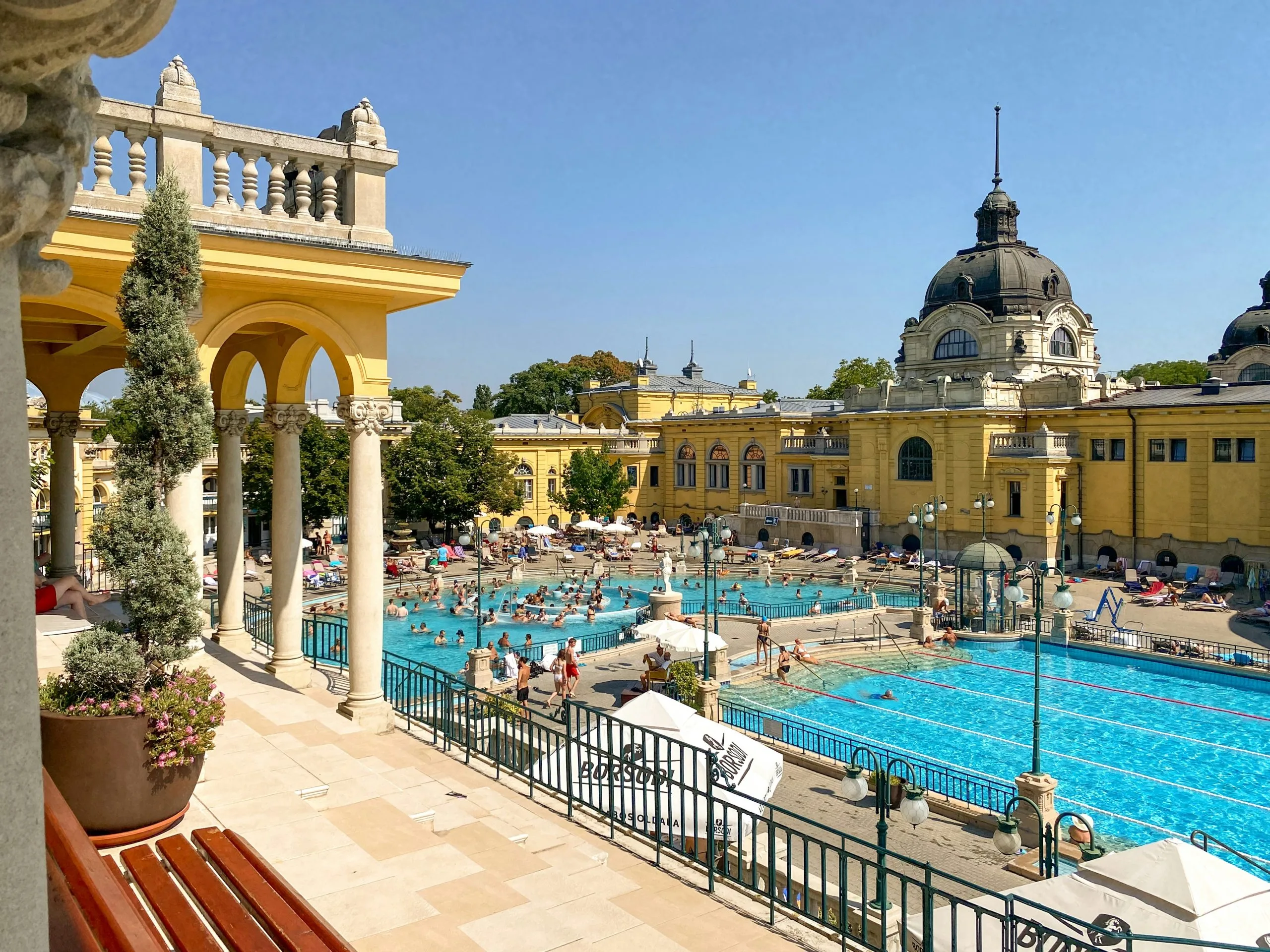Lublin, Poland, on a chilly October evening. The cobblestones of its Old Town (not a cliche—the city is full of them) gently thud under weight of Adidas Gazelles and other terrace favourites, whilst the 12th-century castle looks down upon thousands of English football supporters, bedecked in Crystal Palace’s red and blue, filling the market square’s bars and cafés. They have not come for Kraków’s tourist hordes or Warsaw’s historical gravitas. They have come because Palace, playing the first European match in their long history, face Dynamo Kyiv—the Ukrainian club unable to play at home for obvious reasons.
For days, Palace fans have been waxing lyrical about Lublin on social media. The Motor Lublin Arena, a 15,000-seater stadium built in 2014, sits just a five-minute walk from the city’s main railway station. But it is the city itself—blending history with youthful energy from its large student population—that has captured imaginations. Lublin lacks the fame of Poland’s better-trodden cities, yet 2,500 travelling supporters have discovered what locals have long known: this is one of Poland’s most distinctive and welcoming places.
Sport, it turns out, is tourism’s great democratiser.
Atlas of the unexpected
Conventional tourism gravitates towards the well-worn. Paris, Barcelona, Rome—cities that hardly need introduction. Sporting events, by virtue of where they must be held rather than where tourists wish to go, scatter visitors across an entirely different map. The result creates an inversion: destinations that may struggle to attract leisure travellers find themselves hosting thousands of passionate fans with cash to spend and stories to tell.
Lublin is not alone. Azerbaijan’s capital Baku was hardly a household name among Western tourists until Formula One arrived in 2016. The Azerbaijan Grand Prix, with its street circuit threading through city and along the Caspian Sea promenade, has since become a fixture.
The race draws crowds approaching 90,000. More striking still: F1 tourists in Baku spend an average of 3,000 US dollars each, often extending their stay to explore the country’s attractions. Each year, the Grand Prix injects an estimated 500 million US dollars into the local economy.
The Grand Prix effect extends beyond mere numbers. Azerbaijan has streamlined entry requirements, introducing visa-on-arrival services for race attendees. The country has grasped what many destinations miss: a sporting event is not merely a weekend’s entertainment but a shop window for a nation.
When clubs become ambassadors
Football, with its sprawling European competitions, performs a similar service on a smaller but more frequent scale. Qarabağ FK, the Azerbaijani club that calls Baku home after being displaced from Agdam during the Nagorno-Karabakh conflict, has competed in the Champions League and Europa League for years. When Chelsea travelled to face Qarabağ in the Champions League in 2017, thousands of English supporters discovered Baku for the first time—not through glossy tourism campaigns but through the necessity of following their team.
The same pattern repeats across Eastern Europe and Central Asia. When clubs from Azerbaijan, Kazakhstan, Ukraine and beyond qualify for European competition, they bring visiting supporters to cities that would otherwise struggle to register on Western travel itineraries. These may not all be the high-spending luxury tourists of Formula One, but they are numerous, enthusiastic and increasingly willing to arrive a few days early or stay longer to explore.
UEFA competitions generate approximately 237 million euros in tourism impacts annually, with the total economic impact exceeding 3.6 billion euros. A Champions League final alone injects roughly 50 million euros into a host city’s economy. Smaller matches matter too: even a Europa Conference League fixture brings several thousand visitors, each needing accommodation, meals, transport and, often, a pint or ten.
Beyond the pitch
What makes sporting tourism distinctive is its demographic breadth. Whilst cultural tourism skews towards certain income brackets and educational backgrounds, sport draws from all strata. The 10 UK pounds tickets for Palace’s match in Lublin put European travel within reach of supporters who might never consider a typical city break.
This democratising effect extends to the destinations themselves. Lublin, for instance, is not trying to compete with Kraków for museum-goers or with Wrocław for architectural enthusiasts. Instead, it gains exposure through happenstance—because a Ukrainian club needed a neutral venue and UEFA approved the Motor Lublin Arena. The city’s response has been savvy: its tourist board has prepared guides for visiting fans, bars have advertised themselves as ‘away fan-friendly’, and local authorities have organised meeting points in the Old Town square.
The pattern holds across the region. When FC Astana of Kazakhstan qualified for the Champions League in 2015, European clubs sent thousands of supporters to Central Asia for the first time. When Qarabağ reached the Europa League knockout rounds in 2024, facing clubs like Bayer Leverkusen, they brought international attention to both Baku and the club’s poignant backstory as a team in exile.
The lingering question
Whether sporting tourism translates into sustained visitor growth remains an open question. A one-off visit following a football team does not automatically create a returning tourist.
Nevertheless, the evidence suggests these encounters plant seeds. Cities that host major sporting events often report continued growth in tourism years later. The infrastructure improvements—new stadiums, upgraded transport links, refurbished public spaces—outlast the events themselves. And for every casual fan who attends a match, a smaller number return as tourists, drawn by positive impressions formed during their initial visit.
More intangibly, sporting events reshape perceptions. Baku is no longer merely ‘that place in Azerbaijan’; it is the city with the dramatic F1 circuit. Lublin is no longer just another Polish city tourists skip on their way to Kraków; it is the place where Palace made history (they won, 2-0). These mental reconfigurations matter in a crowded tourism market where capturing attention is half the battle.
The broader lesson applies beyond sport. Any event that compels people to visit places they would not otherwise choose offers an opportunity—provided destinations recognise it and respond accordingly. Formula One, UEFA competitions, even rugby tournaments perform a service that no marketing budget could replicate: they force discovery.
So raise a glass in Lublin’s market square. The Palace fans will likely move on by the weekend, but Lublin has been well and truly discovered. Whether that translates into tour groups and city-break bookings remains to be seen.
For now, thousands of English supporters know exactly where Lublin is, what its streets look like, and how its local beer tastes. That knowledge, once planted, is difficult to erase.
Photo: Dreamstime.







